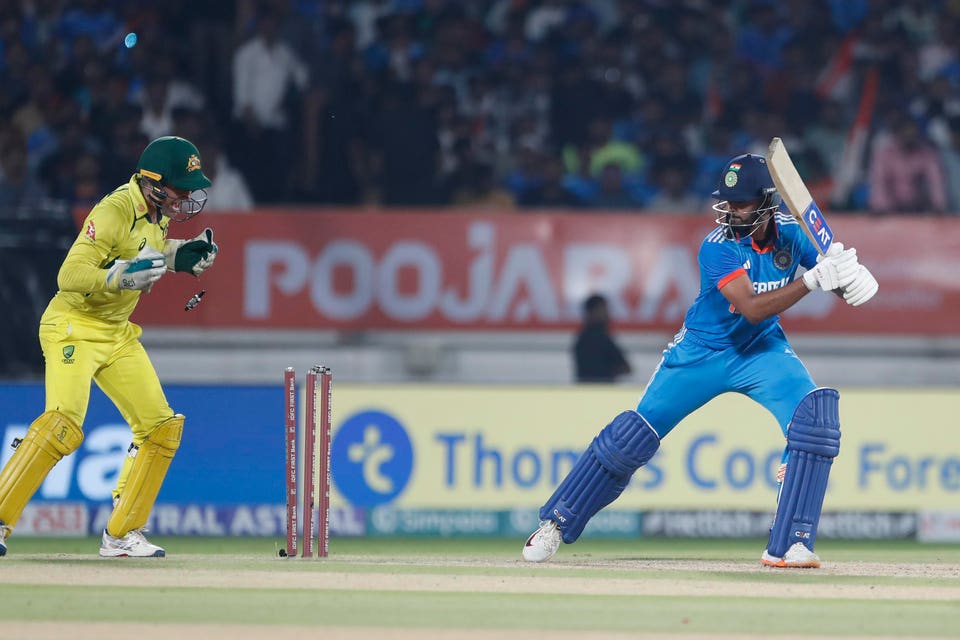Forbes Business SportsMoney The Money-Spinning Cricket World Cup Keeps Afloat Slumping ODI Format Tristan Lavalette Contributor Opinions expressed by Forbes Contributors are their own. Following Sep 29, 2023, 09:41pm EDT | Share to Facebook Share to Twitter Share to Linkedin 50-over cricket has had declining popularity over the years (Photo by Pankaj Nangia/Getty Images) Getty Images For some time now, roughly more than a decade, there have been plenty of think pieces over the demise of One Day International cricket. The 50-over format once attracted huge crowds, an incredibly hot ticket with seemingly never-ending series contested all over the world, before being supplanted by the faster T20 played over three hours.
Suddenly ODIs felt rather archaic and a relic of the 1980s and 1990s when it appeared so fast-paced and fresh compared to the traditional Test format played over five days. Administrators wisely attached themselves to the blossoming T20, where the advent of the Indian Premier League triggered a slew of franchise tournaments which eventually upended the sport. T20 was rarely played internationally, but that has changed too given the format’s popularity.
It is the growth engine for the sport to develop in non-traditional cricket nations with the breezier T20 easier to digest than the longer forms. For most emerging countries, T20 is the only format they play. “We focus on T20 cricket like basically everyone else ranked under 25, but we actually think we would be better suited to a longer format like 50-over cricket,” Japan coach Dhugal Bedingfield told me.
“We just have to be the best T20 team that we can be. ” Japan focuses on T20 cricket (Photo by ICC/ICC via Getty Images) ICC via Getty Images MORE FOR YOU America’s Major League Cricket Debut Surpassed Expectations On And Off The Field While T20 is used as the vehicle to develop the sport beyond its heartland, five-day Test matches – despite being incredibly expensive meaning only a handful of wealthy countries will likely continue to regularly play it – remains cricket’s pinnacle. With Test cricket still holding significant cultural cache in traditional countries Australia and England, as evidenced during a tempestuous Ashes series mid-year, it is likely to defy long-held fears of its demise.
The third wheel is ODI cricket which doesn’t boast the rich history of Test cricket – the first official ODI was in 1971 – and isn’t a driver of growth globally like T20. The game itself lacks Test’s drawn out drama and innate quirks, while feels slow compared to T20. Despite a cascade of gimmicks, it hasn’t been able to change the perception that the middle overs – 15-40 generally – are simply boring.
Due to rule changes and the aggressive approach from T20 inevitably shifting across, the 50-over format has become notably skewed to batting. Where once a total of 300 was considered sizeable, it’s rather middling these days with scores seemingly being inflated by around 50 runs. Low-scoring contests, which peppered ODIs in its heyday, are rarer meaning there is more predictability across the board.
Plenty of influential cricket figures have written it off. “The game is becoming too predictable. From the 15th to the 40 over, it’s losing its momentum.
It’s getting boring,” Indian cricket legend Sachin Tendulkar said. There has been some lament over a format that was once beloved for decades. “The administrators have diminished the format by greatly favouring T20.
Players are also guilty for allowing this to happen,” former Australian captain Ian Chappell wrote in ESPNcricinfo . “The ODI has been reduced to virtually depending on a World Cup year for its importance. ” The Marylebone Cricket Club, guardian on the rules of the sport, earlier this year recommended a reduction in ODI cricket, believing it would “create much-needed space in the global cricketing calendar”.
But ODI cricket still endures with administrators reluctant to pull the trigger. The format as a whole may feel wheezy, but the 50-over World Cup – perhaps surprisingly – remains the showpiece ICC prize even over its T20 counterpart. For now, anyway.
The cricket World Cup remains hugely popular (Photo by Gareth Copley-ICC/ICC via Getty Images) ICC via Getty Images For some time there has been informal debate over ODI cricket’s future at the ICC board and Chief Executives’ Committee level. A few years ago, when T10 – a supercharged game played over 90 minutes like soccer – was being mooted as an official format, there had been some fears that ODIs might be the casualty. T10 has remained on the backburner, but ODI’s future has persisted in the boardrooms.
“There are always conversations over ODIs, especially as there are more opportunities in T20 for a lot of countries,” Zimbabwe’s ICC board director Tavengwa Mukuhlani told me. “We have to see what broadcasters want. Our business is to run cricket and there is value in the product, especially the World Cup.
“ODI is still not yet something to be worried about. ” Still a believer, Zimbabwe have been pushing to play more ODIs, including organizing tri-series – which was a fan favorite particularly in Australia during the heights of 50-over cricket. When Ramiz Raja was in charge of Pakistan, he too was an advocate of multi-team ODI series but those plans to ignite the format did not materialized underlining the difficulties.
While ODIs are not dotting the calendar like its golden age, there is still a sprinkling in the cycle of 2024-27 with no plans – for now – to scrap them. “ODIs still have a place in cricket,” Mukuhlani said. “There is definitely interest in protecting them.
” Follow me on Twitter . Tristan Lavalette Editorial Standards Print Reprints & Permissions.
From: forbescrypto
URL: https://www.forbes.com/sites/tristanlavalette/2023/09/29/the-money-spinning-cricket-world-cup-keeps-afloat-slumping-odi-format/
